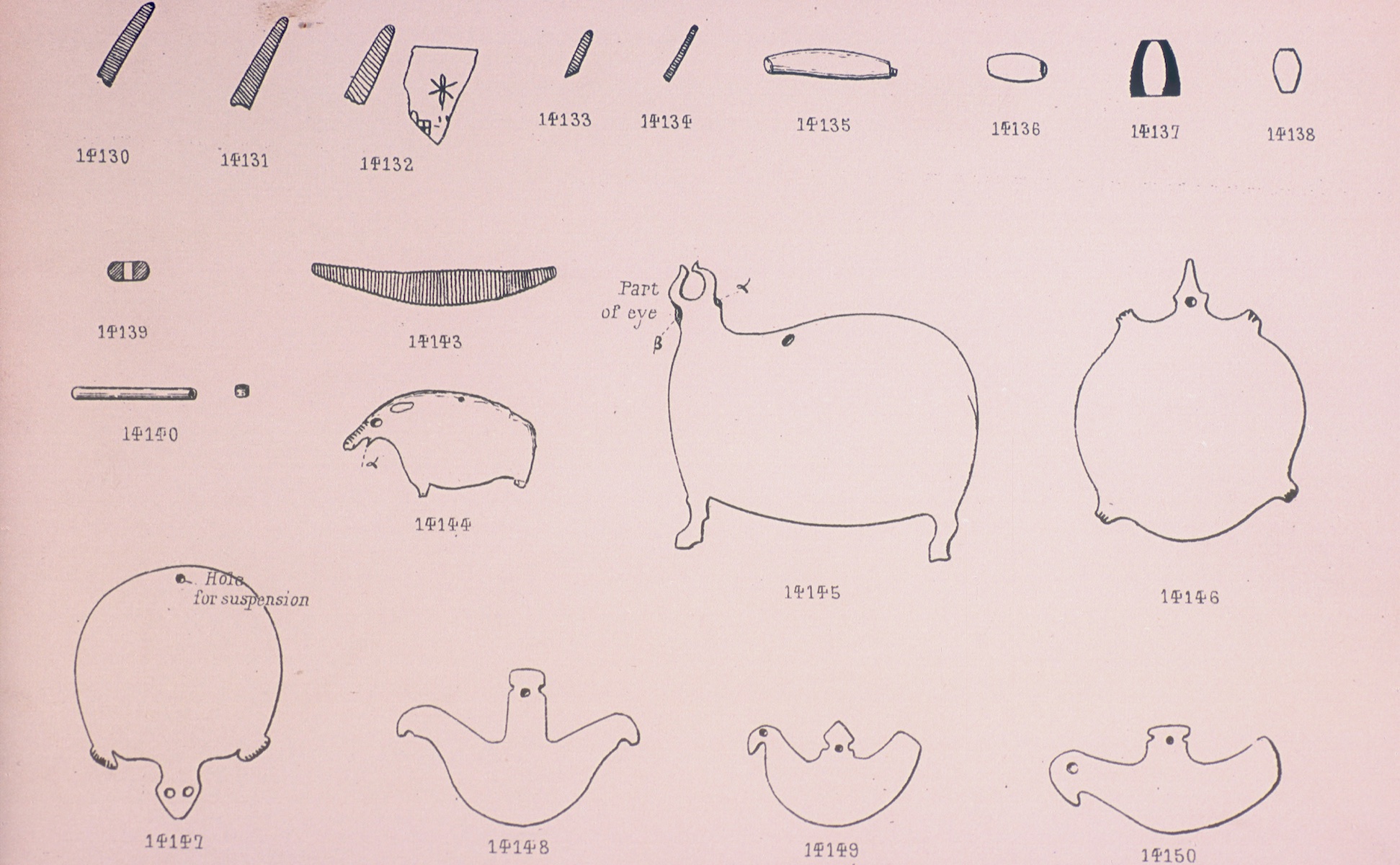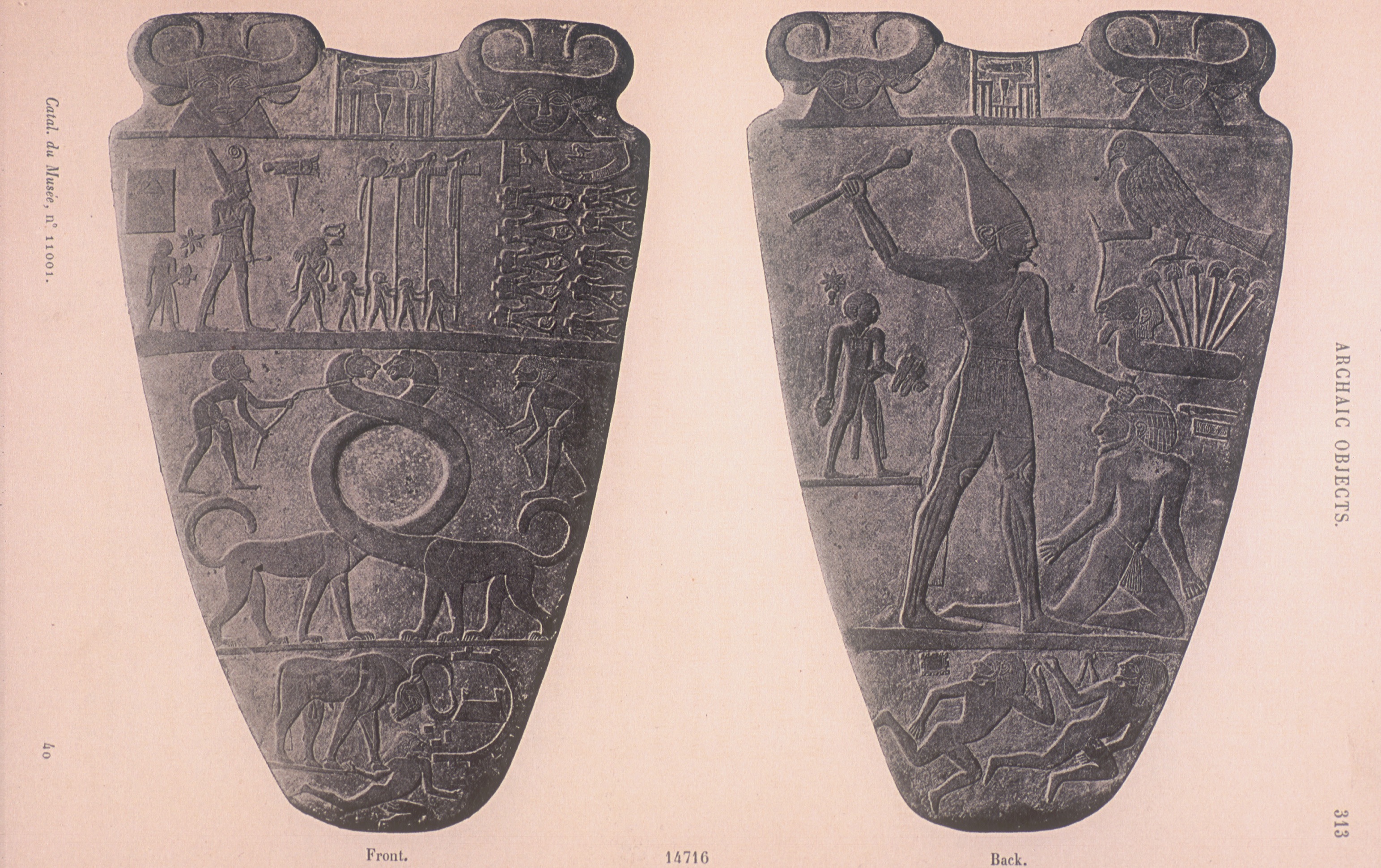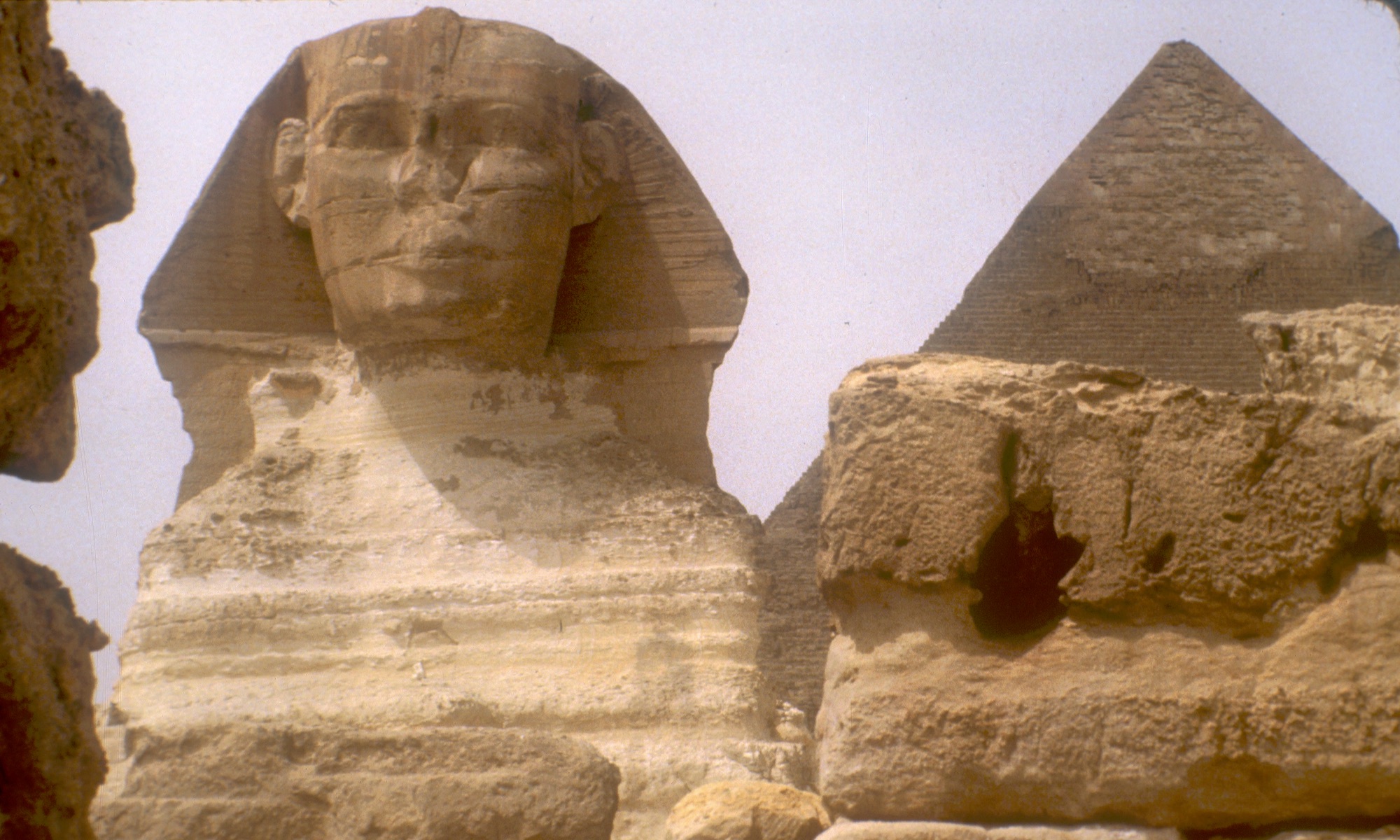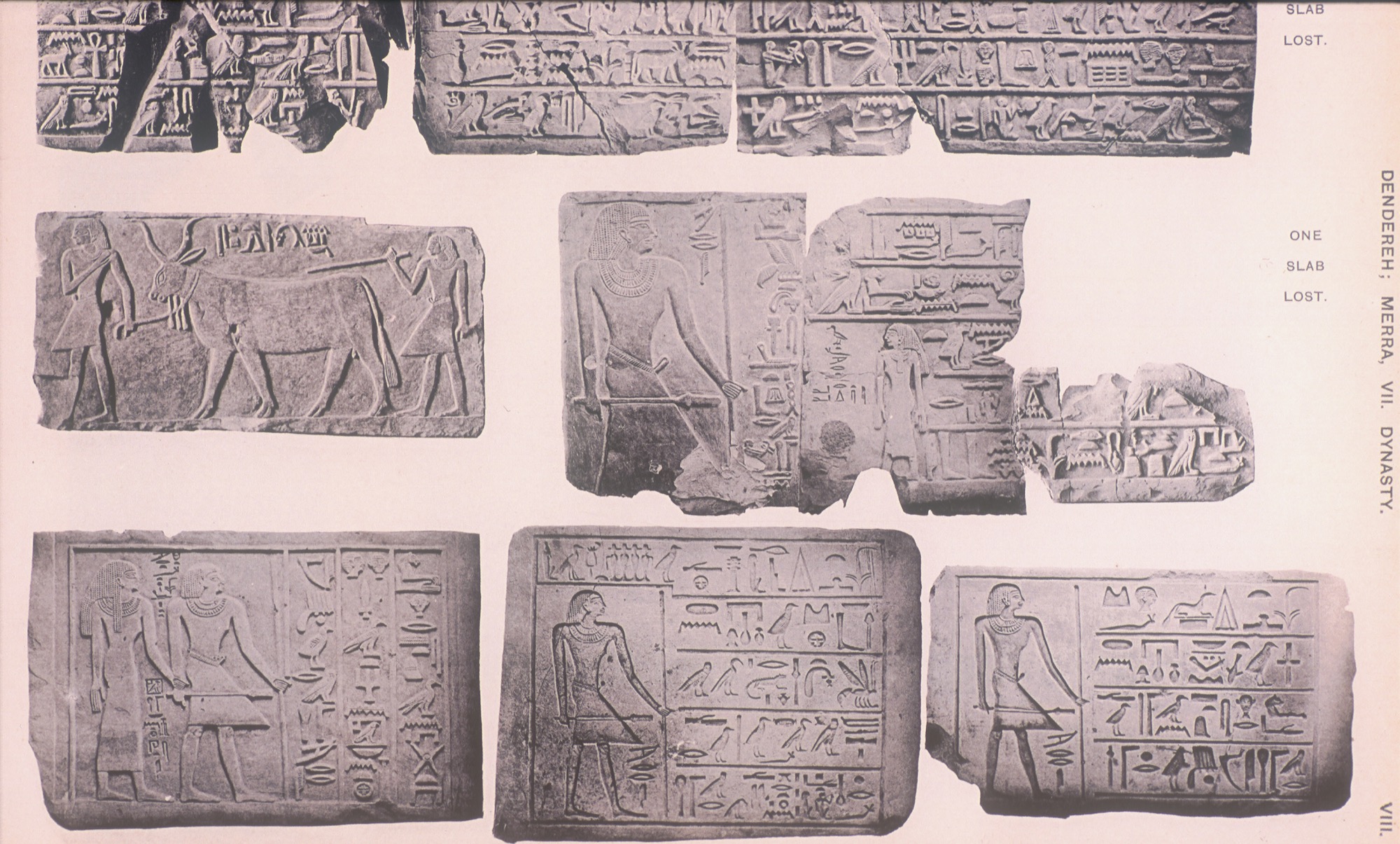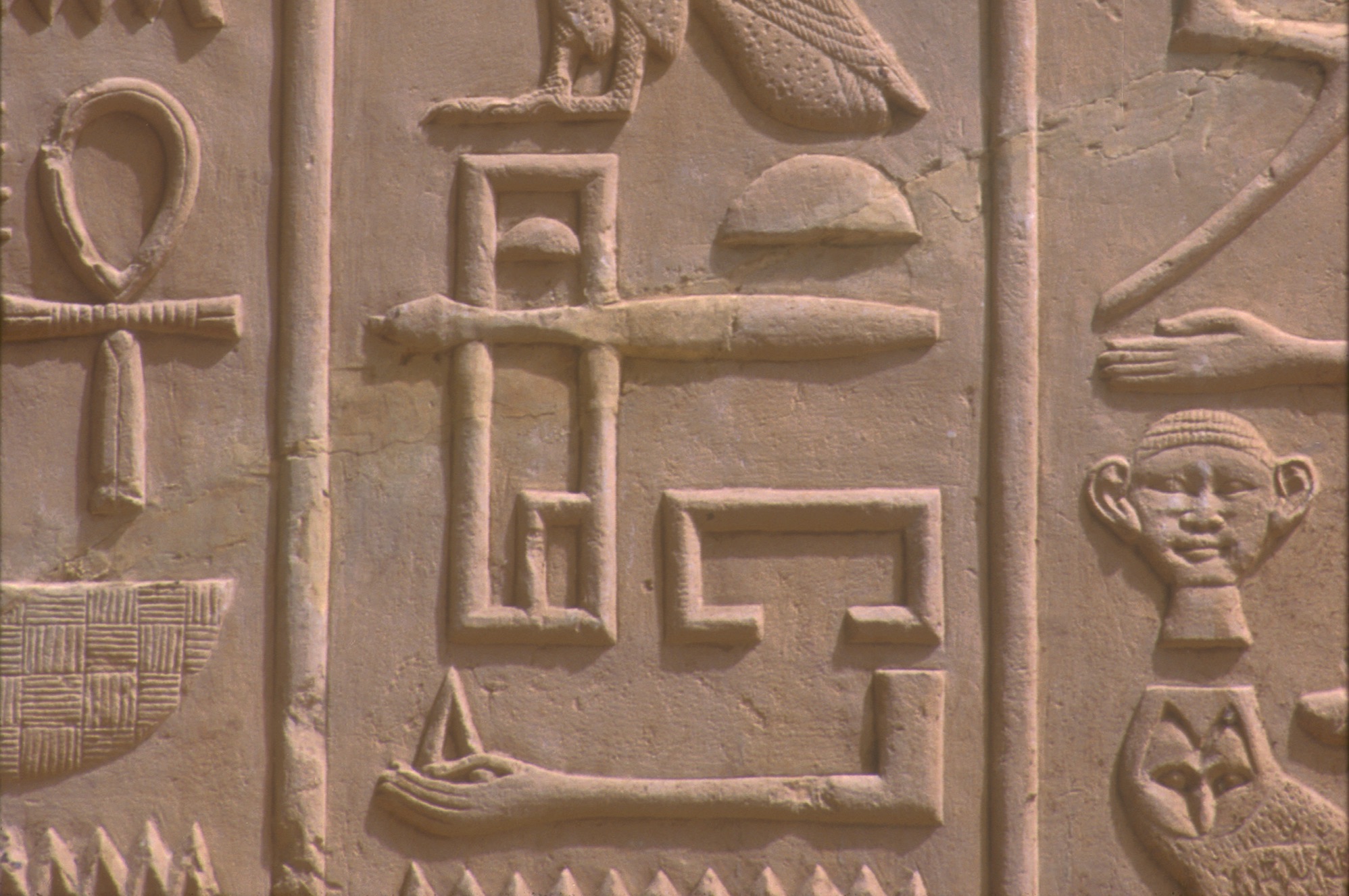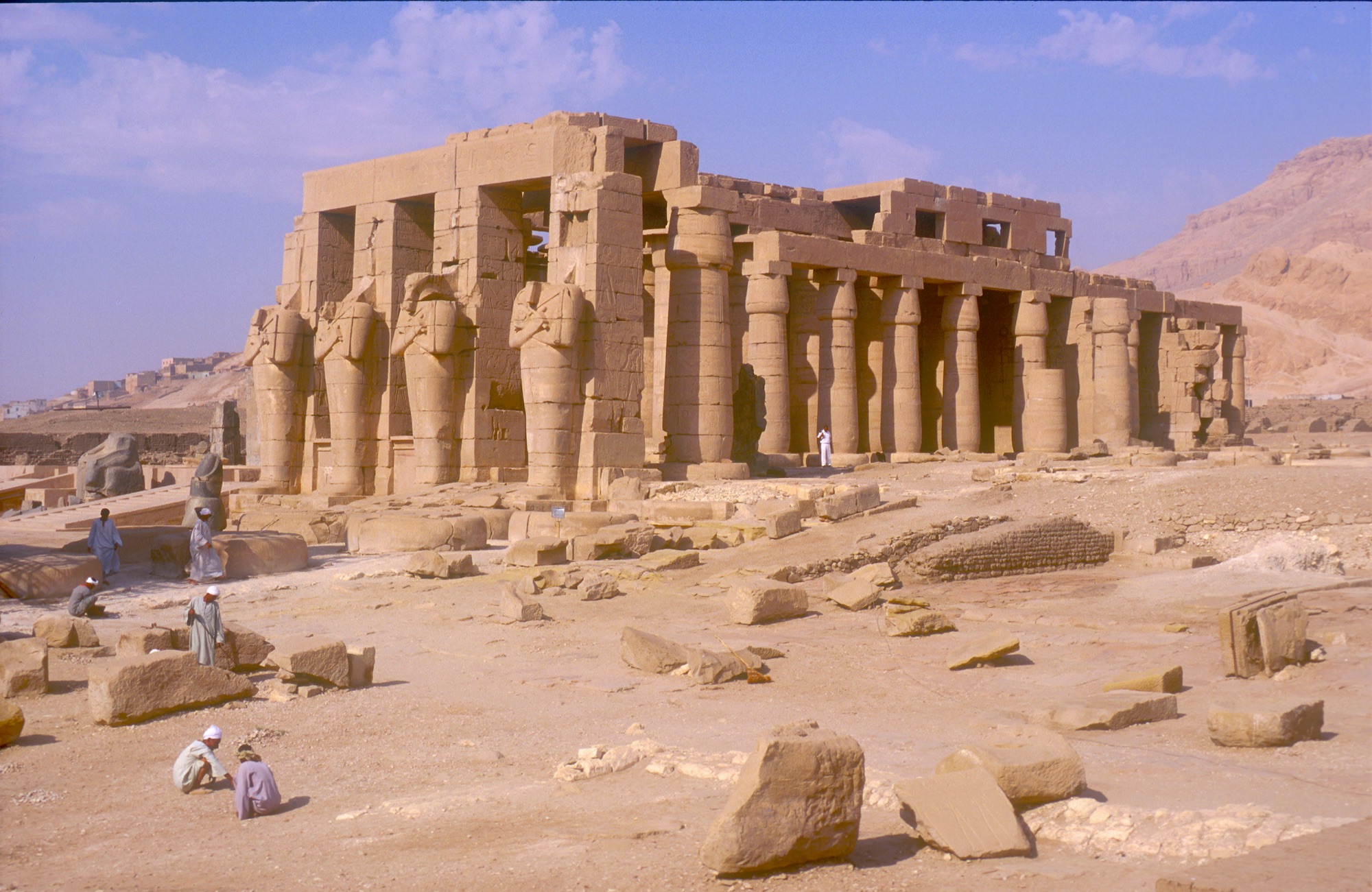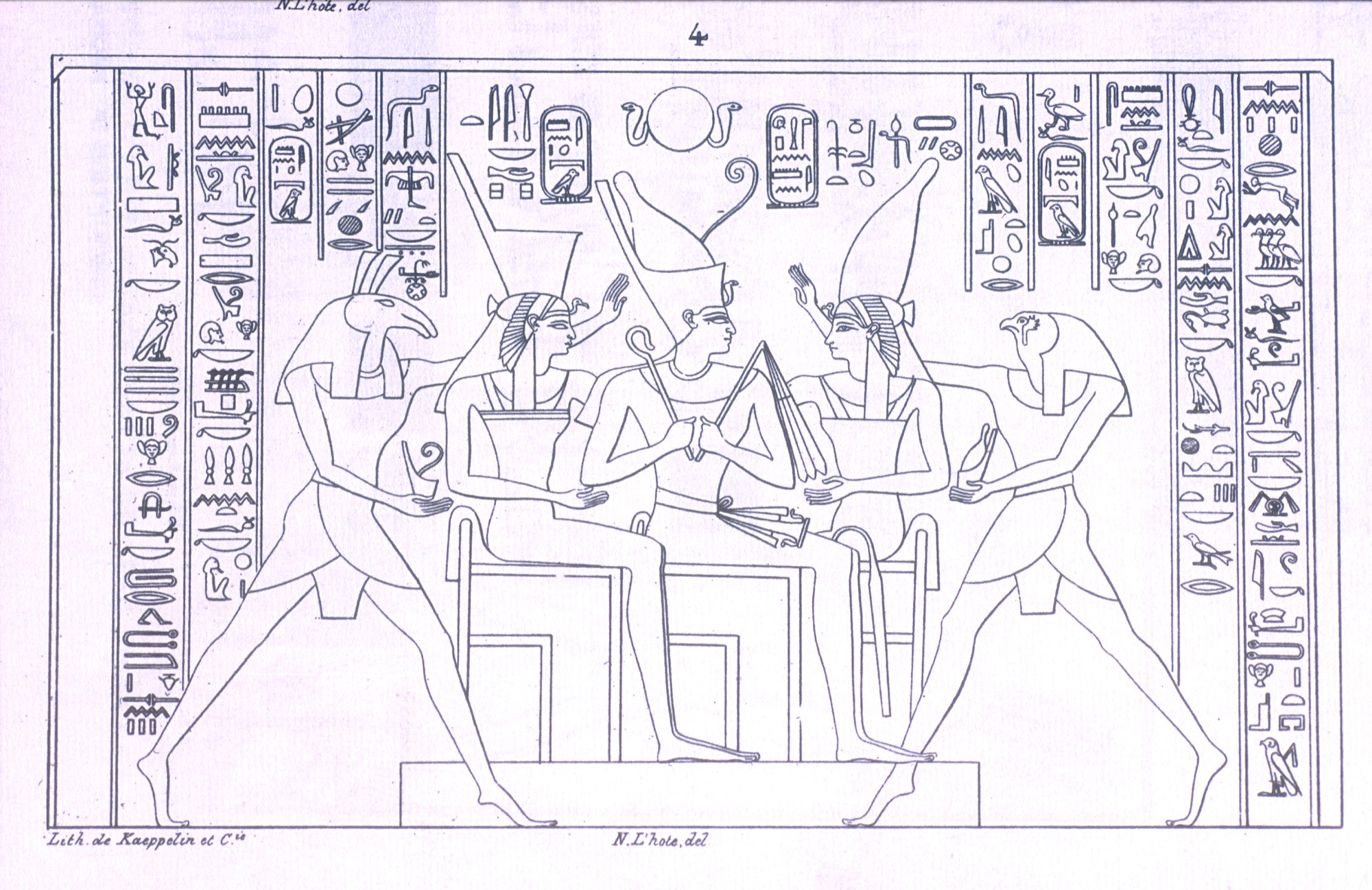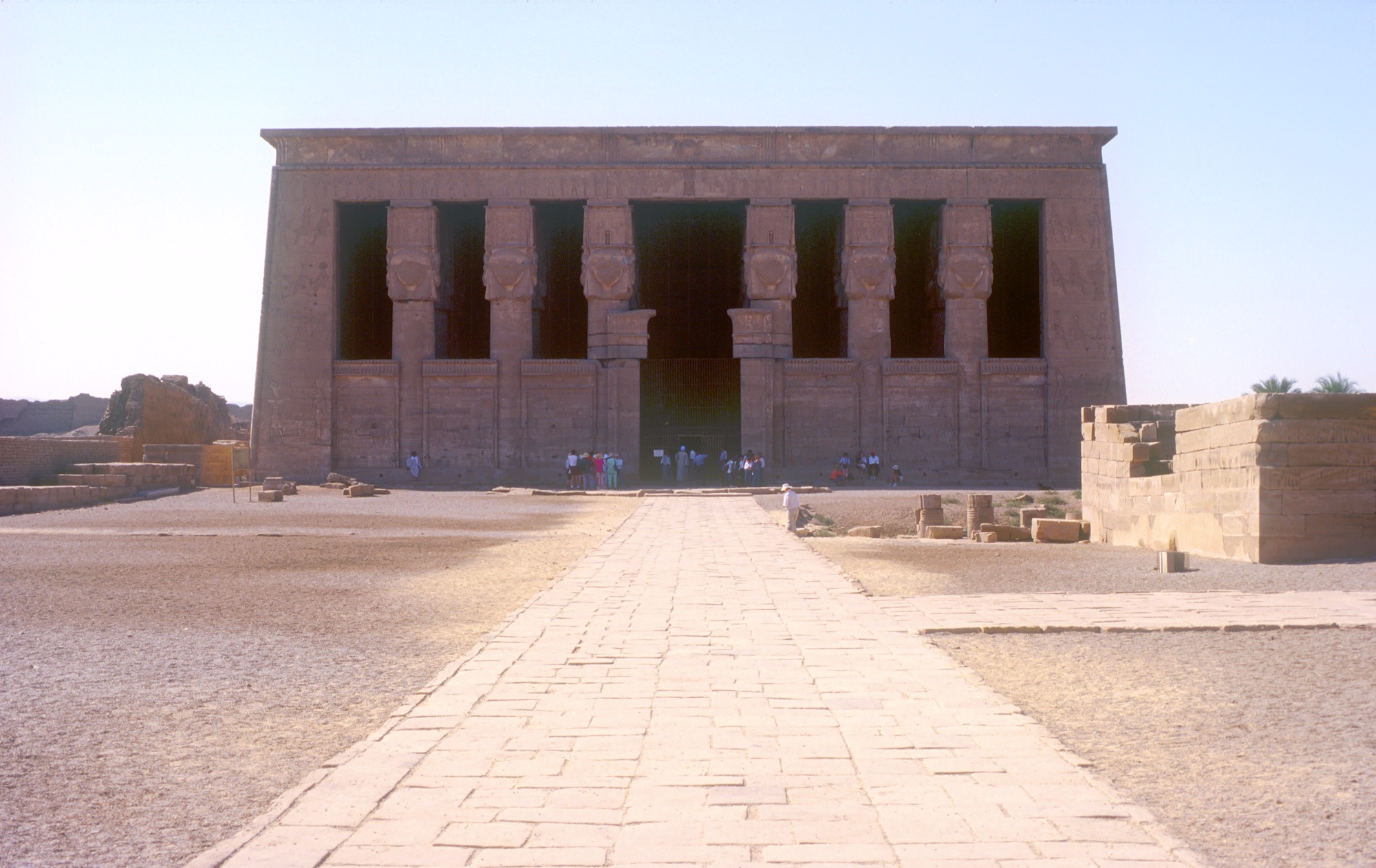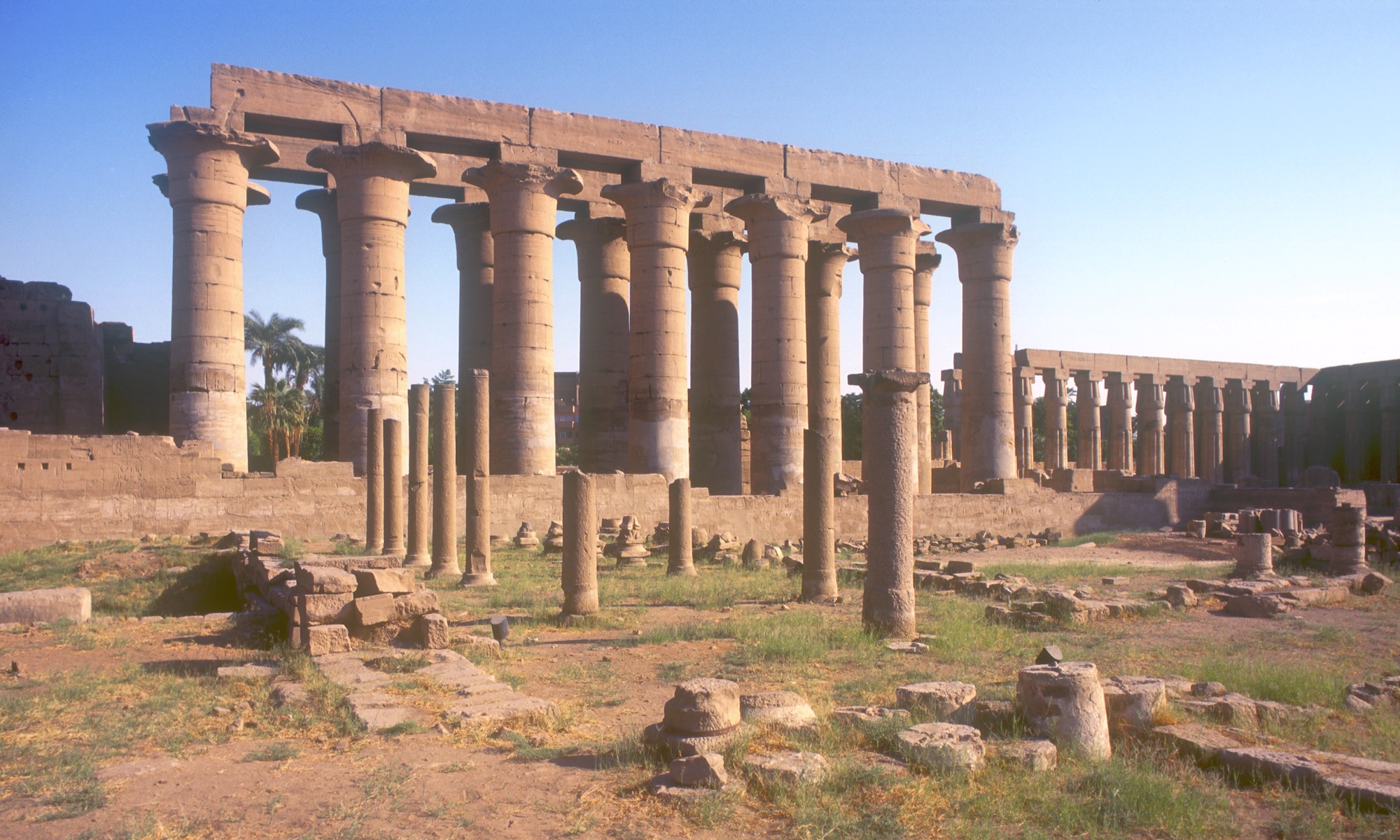Timeline
-
Pre-3100 B.C.Prehistoric and Predynastic Periods
-
3100 B.C.Early Dynastic Period
-
2700 B.C.Old Kingdom
-
2184 B.C.First Intermediate Period
-
2040 B.C.Middle Kingdom
-
1782 B.C.Second Intermediate Period
-
1570 B.C. - 1070 B.C.New Kingdom
-
1070 B.C. - 747 B.C.Third Intermediate Period
-
747 B.C. - 332 B.C.Late Period
-
332 B.C. - A.D. 395Graeco-Roman Period
-
A.D. 395 - A.D. 641Byzantine (Coptic) Period
Prehistoric and Predynastic Periods
There is evidence of human activity in northeastern Africa since the Middle Pleistocene Period. By the Middle and Upper Paleolithic, between 90,000 to 10,000 years ago, there was a gradual movement of hunter-gatherer populations into the prehistoric Nile Valley and the drying lake and savannah regions of the Eastern Sahara precipitated by climatic changes. Traces of these early peoples survive in the forms of stone tools and rock carvings on the higher terraces along the Nile (including the western Theban plateau) and in the oases. As the nomadic hunter-gatherers came to settle along the edges of the Nile Valley, a transition to a settled lifestyle dependent on agriculture took place.
Names for the various phases of Neolithic cultures were once based on type-sites where typical artifacts were first classified. For the Predynastic Period, the chronological/material culture divisions Badarian, Amratian, and Gerzean have been replaced and redefined as Naqada I, II, and III. These cultures developed in Upper Egypt and were roughly contemporary with but materially different from Neolithic cultures located in the Nile Delta and typified by such type-sites as Ma'adi and Marimdah, as well as in the Fayyum and at al Omari. There seems to have been a gradual influx of Upper Egyptian Neolithic material into Lower Egypt as well as into Nubia. Relations with neighboring peoples to the south, west and northeast of Egypt included both trade and warfare.
Pit graves were common throughout the Nile Valley, particularly in Upper Egypt (sites excavated in Lower Egypt are predominantly settlement sites), but gradually came to be replaced by more regular, rectangular chambers cut into bedrock and covered with small mounds of debris and, later, of mud-brick. Numerous grave goods indicate a belief in an afterlife and their uneven distribution in cemeteries already points to a stratified society. In the Theban area evidence of Naqada I and II structures and graves have been found at the site of at Tarif.
Early Dynastic Period
The Early Dynastic Period, sometimes called the Archaic Period in earlier studies, consisted of Dynasties 1 and 2. Some Egyptologists also place some of the kings known to have ruled Upper Egypt prior to the unification of the country in a group called Dynasty 0. Other scholars place these pre-unification kings in the Predynastic Period.
The political union of the kingdoms of Upper and Lower Egypt, although traditionally assigned to the ruler Menes, probably was carried out under several reigns. Attempts to equated this Menes of Manetho's chronology with historical individuals such as Aha and Narmer are theoretical. During this period, the essentials of pharaonic culture were established, completing a long period of development extending back through the Predyanstic Period. These included a centralized royal administration, a written form of the language, artistic canonization of relief and sculpture, stone building techniques and large-scale mudbrick constructions.
The extensive cemetery at Abydos, where the ancestors of the first rulers of united Egypt were buried, continued as the site of the first royal necropolis. Large subterranean complexes of chambers containing not only the deceased, but numerous food offerings, furniture, clothing, as well as weapons were covered with a low mound in the desert. They were augmented by large mud brick enclosures nearer the agricultural area that probably served as the focus of offering and funeral rites.
At Memphis, the administrative center of the unified kingdom, a cemetery of large mudbrick mastabas was constructed on the north end of the Saqqarah plateau for the use of important officials. The presence of luxury burial goods bearing royal names, probably gifts from the king, led some scholars to the now discounted theory that these were royal tombs. In the Theban area, little material evidence has been preserved from Dynasties 1 and 2, apart from some ceramic and stone vessels from Karnak and at Tarif. Given the extensive remains at contemporary sites to the north (Naqada) and south (Hierakonpolis), it is likely that Thebes also had a legacy of this period, now lost.
Old Kingdom
The Old Kingdom (Dynasties 3 to 6) was a period of great prosperity and innovation whose most memorable feature was surely the pyramid. In addition to flat-topped Mastaba tombs (now used for the burials of nobility), massive stone pyramid complexes were constructed at sites from Abu Rawwash to Maydum and used as burial-places for the king and royal family members. At Jizah, three of the largest pyramids were constructed (for Khufu, Khafra, and Menkaura) and a great sphinx, representing the king (Khufu) as Ra-Horakhty, was carved in nearby bedrock. Adjacent to the pyramids were mortuary temples. Surrounding them lay vast cemeteries of mastabas and rock-cut tombs for minor family members, courtiers, officials, and priests.
Not until Dynasty 5 were the hitherto undecorated pyramid chambers carved with elaborate Pyramid Texts. These were religious and magical utterances intended to facilitate the king's journey to the Netherworld, the journey of the sun through the heavens, and the safeguarding of the royal body. Unlike royal tombs, the tombs of noblemen had been decorated since the Early Dynastic with elaborately carved and painted scenes of daily life.
Egyptologists have suggested that the Old Kingdom ended painfully, at the end of Dynasty 6, with the economic, political, and cultural collapse of the country. They have attributed the resulting depression to climate change, low Niles, political jealousies, a decline in foreign trade, and the inordinately long (96 years) and increasingly weak reign of Pepy II. Most now believe that the changes ushering in the First Intermediate Period were neither as rapid nor as dramatic as earlier historians have suggested.
First Intermediate Period
Dynasties 7 to 11, called the First Intermediate Period, have been described as a time of political disunity, economic depression, and cultural decline separating the impressive achievements of the Old Kingdom from those of the Middle Kingdom. Such a picture is now regarded as too simplistic. But there were dramatic changes in the administration of Egypt during this time and there was none of the monumental building activity or other costly projects of earlier dynasties. Much of the country's bureaucratic authority was now in the hands of local officials. But the city of Memphis continued to retain some of its former authority as Dynasties 7 and 8, until a rival group of local administrators at Ihnasiyat al Madinah began to expand their control over a significant part of Egypt as Dynasties 9 and 10.
The southern city of Thebes emerged as a rival to Ihnasiyat al Madinah, its rulers forming Dynasty 11. Conflicts between them resulted in the victory of Thebes and the collapse of power of the rulers from Ihnasiyat al Madinah. The reunification of the country took place under Mentuhetep II. Later Egyptians recognized his reign as the beginning of the Middle Kingdom.
First Intermediate Period art and architecture are often referred to as provincial in style. The characteristics of the various provincial styles were the result of two factors: the absence of any central authority to train artists and establish or maintain stylistic standards; and the inability of provincial administrations to acquire raw materials beyond the borders of their own administrative district.
Middle Kingdom
The Middle Kingdom, Dynasties 11 to 13, began with the reunification of Egypt by the Dynasty 11 Theban king, Mentuhetep II. Many of its features were drawn from Old Kingdom models. The kings of Dynasty 11 made Thebes their capital city and they were buried there, in saff (meaning "row" in Arabic) tombs, at the northern end of the Theban Necropolis. The most impressive monument of the dynasty is the temple-tomb at Dayr al Bahri built by Mentuhetep II.
Middle Kingdom rulers such as Senusret III returned significant power to the king, expanded agriculture in the Fayyum, established tighter military and economic control over Nubia, increased foreign trade, and devoted considerable resources to art and architecture. Temples were established or enlarged, most notably that of Amen at Karnak. The White Chapel, the Bark shrine of Senusret I, at Karnak is a premier example of the period's outstanding workmanship.
Dynasty 12 began with Mentuhetep IV's former Vizier, Amenemhat I, who, for unknown reasons, moved his capital from Thebes to a new (as yet, unidentified) location south of Memphis called Itjtawy. During this period, royal cemeteries were located at Lisht, Lahun, Dahshur, and Hawwarat al Maqta', and royal tombs again took the form of pyramids. A new religious literature appeared in the First Intermediate Period when the so-called Coffin Texts replaced Pyramid Texts and, as their name implies, were painted on coffins rather than pyramid walls. They were non-royal texts used by many classes of society, and are sometimes said to reflect the increasing democratization of Egyptian funerary beliefs.
The Middle Kingdom came to an end in Dynasty 13 when Egypt's central government became increasingly fragmented and localized, Itjtawy was abandoned, and parts of Lower Egypt fell under the control of the Hyksos.
Second Intermediate Period
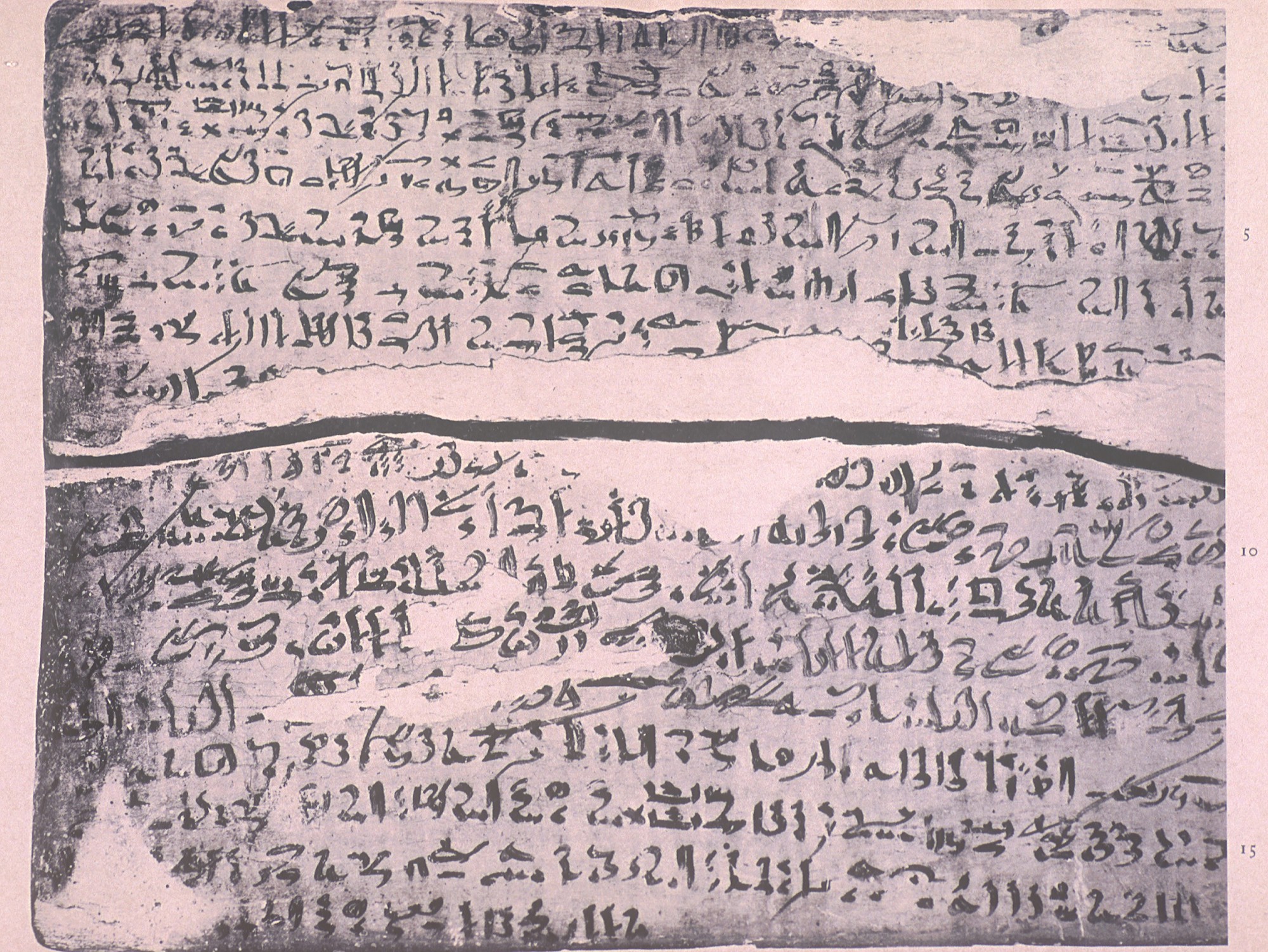
At the same time as the decline in authority of the rulers of Dynasty 13, large numbers of foreigners from western Asia were moving into parts of Lower Egypt and settling there. Few monuments date to this time and it is difficult to trace this migration in detail. But the immigrants were later called the Hyksos, from the Egyptian term heka khasut, meaning "rulers of foreign lands." They were a mixed bag of nomadic and semi-nomadic peoples who came to Egypt not as warriors bent on conquest, as we once believed, but as peasants seeking grazing land for their sheep and goats or work as laborers and servants. They quickly adopted Egyptian customs and readily mixed these with their own cultural traditions.
By Dynasty 15, the Hyksos had established their own city in the eastern Delta at Tall al Dab'a and as their numbers increased they moved deeper into the country, eventually controlling Memphis and other cities in the north. They ruled much of Lower and Middle Egypt for over a century and sought alliances with opponents of Egypt to the south in Nubia. Not surprisingly, this potential pincer movement soon brought the Upper Egyptians, whose capital was Thebes, into open conflict with both. The ensuing battles, fought by Theban kings Ta'o II, Kames, and Ahmes I, were ultimately won by the Theban rulers who regained control of a united Egypt.
The Hyksos introduced the harnessed horse and chariot into Egypt, both used extensively in the New Kingdom for military activities, but little else. They also brought the composite bow, armor, the vertical loom, the lyre, and the lute.
New Kingdom
Dynasty 18 through Dynasty 20, known as the New Kingdom, witnessed a time of international prestige and prosperity for Egypt. The kings of this period conducted extensive military, diplomatic and trade relations with Nubians as far south as the Fourth Cataract in Nubia, with the Hittite Empire and the city states as far north as far as the Euphrates River in Syria, and with other Mediterranean states. In some areas Egypt exercised outright control. Several New Kingdom pharaohs (Thutmes IV, Amenhetep III and Rameses II) strengthened their international relations by marrying the daughters of foreign monarchs, and building Egyptian temples in foreign outposts. Foreigners were also active in all levels of Egyptian society, from slaves to personal aides to the king. Egyptian religion, language and art received some influences from these foreign contacts.
Foreign tribute and agricultural prosperity during the New Kingdom provided the means to enlarge and build new state temples and cities. The site of Thebes, modern Luxor, became powerful as the principal cult center of the god Amen-Ra and received a great deal of the wealth from the empire. Temple building in stone increased in scale at other cult centers such as that of Ptah at Memphis, Ra at Heliopolis, and Osiris at Abydos. Kings also built a series of memorial temples (now physically separated from their tombs) for themselves along the edge of the cultivation on the Theban West Bank. The traditional religious institutions weathered a serious threat during the latter half of the Dynasty 18, when Amenhetep IV (also known as Akhenaten) rejected Egypt's former polytheistic religion and replaced it with his own monotheistic religion focused on one god, Aten. Akhenaten destroyed images of Amen throughout the country. He moved both the religious and the political capital of Egypt to a new city, which he called Akhetaten (modern Tel el-Amarna).
Tutankhamen rejected these new religious ideas and restored the old, by beginning a new temple building program. This was continued by his successors. The political capital was Memphis (except during the Amarna Period) until Rameses II built a vast new city called Pi Rameses in the Nile Delta. Wealth in Egypt was also channeled into the building of tombs during the New Kingdom, particularly on the Theban West Bank. While the Valley of the Kings was the final resting place of the New Kingdom rulers, from Dynasty 19 on the Valley of the Queens served as the burial ground for many queens and princes as well. Nobles also had their tombs built in the Theban hills. Previous to the Amarna Period, non-royal tomb art and architecture focused on the noble, his family, and his achievements. After the Amarna Period the non-royal art was centered on the pharaoh and/or formulaic books of the afterlife as in the royal tombs.
The stability and prosperity of Egypt began to decline toward the end of Dynasty 19, when there were a series of power struggles for the throne. Among those who reigned during this period were an usurper (Amenmeses), a young child (Siptah), his regent and stepmother Queen Tausert and her consort Bay. By Dynasty 20, the Hittite empire had collapsed and left a void, which was partly filled by the powerful Assyrians. On the home front during late Dynasty 19 and Dynasty 20, the Egyptians had to fight off numerous invasions of Nubian, Libya, Sea Peoples, and other international factions.
Other domestic issues threatened Egypt: insufficient Nile floods, the inflation of the price of grain, a harem conspiracy which might have led to Rameses III's death, and strikes by the tomb builders protesting the arrears in food payments due them from the stores of the memorial temples on the Theban West Bank. Many of the tombs in the Valley of the Kings were robbed during this period. Simultaneously, there was a rise in power of the High Priest of Amen at Thebes, which lead to the downfall of Rameses XI, the final king of the New Kingdom.
Third Intermediate Period
The Dynasty 20 pharaohs, with their capital at Pi Ramesses in the Delta, were not able to maintain control over the High Priests of Amen in Thebes. At the end of Dynasty 20, the Viceroy of Kush, Panehsy, began a civil war with Rameses XI, which was put down by his General Herihor. After the war, Herihor took control of Thebes as the High Priest of Amen and depicted himself as a pharaoh and inclosing his name in a Cartouche at Karnak. At the same time, Smendes, the new pharaoh in Lower Egypt, moved the capital to Tanis in the Delta. The new Temple of Amen at Tanis was modeled after the Temple of Amen at Karnak. The dynastic rivalry was subdued when the High Priest of Amen, Pinedjem I, married into the royal family at Tanis.
The local populace had been robbing the royal tombs in the Valley of the Kings since Dynasty 20. This prompted the High Priests of Amen to rebury many of the royal mummies in a hidden location above Dayr al Bahri (TT 320). Pharaohs of Dynasty 21 to 24 were buried within the walls of Temple of Amen at Tanis, thus adding a level of security, perhaps due to the tomb robberies of the Valley of the Kings. Likewise, the High Priest of Amen and other local clerics were buried within the enclosure wall of Madinat Habu.
The beginning of Dynasties 22 and 23 witnessed political stability, during which Libyan pharaohs ruled from the Delta, first in Tanis and then Bubastis. The Libyan kings were able to maintain control from the Delta over the High Priests of Amen by placing their children in high positions in the clerical hierarchy. They carried out various building works at Karnak and throughout Egypt.
The reunification of Egypt under Libyan rule did not endure. Centralized authority declined further and further until three dynasties were ruling simultaneously from three cities in the Delta (Tanis, Bubastis and Sais), along with smaller chiefdoms, toward the end of the Third Intermediate Period.
Late Period
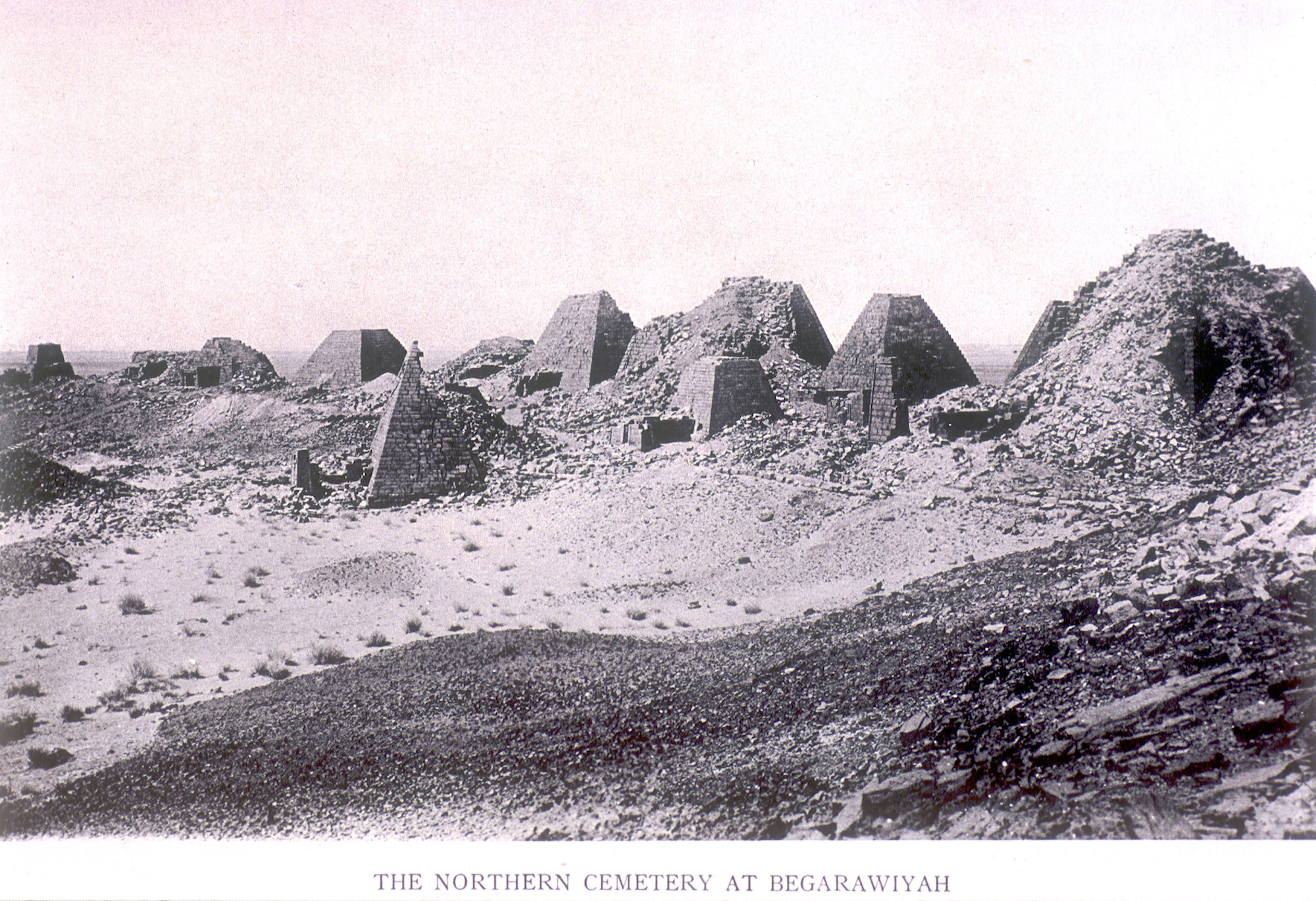
Piankhi, the ruler of a Nubian kingdom centered at Napata in the area of the Fourth Cataract, took advantage of the disunity in Egypt at the beginning of Dynasty 25 to conquer Egypt. He met little resistance. After his victory, Piankhi returned to his capital, leaving his sister, Amenirdis, as the God's Wife of Amen at Thebes, a position that allowed her to maintain control of Egypt in the absence of her brother.
In this way, Nubian pharaohs maintained control over virtually all of Egypt during the dynasty. They carried out many building projects throughout Egypt and Nubia. They adopted Egyptian customs, beliefs, religion, and kingship in their own culture, and this influence continued long after the end of Dynasty 25. They made Amen the state god of Nubia, were buried under pyramids in Nubia, and adapted the hieroglyphic script for writing their own language.
The Nubians and Assyrians fought several campaigns for control of Egypt. Eventually the Assyrians were successful in ousting the Nubians from power, but soon an Egyptian, Psamtik I, took control of Egypt, beginning Dynasty 26. He arranged for his daughter, Nitocris, to be adopted by the Kushite God's Wife of Amen at Thebes, thus assuring that she would be the next God's Wife of Amen. This position gave Nitocris extraordinary power over the region and significant land endowments throughout Egypt. Psamtik I also allied himself with Mentuemhat, the powerful mayor of Thebes who owned the largest and most complex private tomb in Thebes (TT 34), effectively gaining control over the whole of Egypt.
During this period there was a large influx of foreigners into Egypt. Phoenicians came as traders; Greeks and Carians came as mercenaries. Immigrants from the Near East, Libya, the Aegean, Nubia, and elsewhere settled in Egypt. A new, simplified script, called Demotic, was introduced mainly for written documents. On the other hand, monumental architecture, language, and art styles harkened back to the Old Kingdom. These archaizing tendencies also led to the copying of numerous works from the Old Kingdom, most of which are the only surviving copies today.
In 525 B.C., the Persian army under Cambyses conquered Egypt and its kings ruled the country as Dynasty 27 through local representatives based at Memphis. They established juridical guides for Egypt published in both in the demotic Egyptian script and Aramaic, the lingua franca of the age. Like many of their foreign predecessors, the Persian kings built temples in Egypt, and achieved a new technological level by digging a canal linking the Nile to the Red Sea.
During Dynasties 28 to 30, Delta princes gained independence from Persian rule. These dynasties were weak and the Persians eventually reconquered Egypt in 341 B.C., but were able to maintain control for less than a decade.
Graeco-Roman Period
Alexander the Great conquered Egypt in 332 B.C., thus ending unwanted Persian rule. The Egyptians willfully accepted him as pharaoh because he adopted the Egyptian kingship and religion. Among other building projects, Alexander laid the foundations of a new city called Alexandria on the Mediterranean Coast, which became the new capital of Egypt. Upon Alexander's death, control of Egypt fell to one of his generals, Ptolemy I Soter, who began a line of monarchs who ruled Egypt for the next 275 years.
Greek became the official language of the government. Demotic, however, was still used by the majority of the Egyptians and used in lesser administrative offices. Likewise, high officials were Greek, while local administration remained in Egyptian hands. Throughout most of Ptolemaic rule, the Egyptians were unsettled with Greek rule and often revolted. Religiously, the Ptolemies combined Egyptian and Greek religion. They established the national cults of Serapis, of Arsinoe II, and of the Ptolemies themselves. They continued to build many traditional temples all over Egypt, including Philae, Dendarah, and Idfu, as did their successors, the Roman emperors. The Greeks blended the traditional Egyptian styles with contemporary Hellenistic styles in these edifices, and in other artwork.
The well-known Cleopatra VII was the last of the Ptolemaic rulers and the only Ptolemy to know how to speak Egyptian. After her lover Mark Antony lost the battle of Actium to Octavian, Cleopatra committed suicide and Egypt became simply another province of the Roman Empire. While Romans filled the upper levels of the administration in Egypt, most power fell into the hands of the Egyptians. City councils were in charge of local administration. The use of the demotic script dwindled, as Coptic began to replace it. But more importantly, Greek continued to be used for administrative purposes; Latin was hardly used at all.
The Ptolemies had exploited the Fayyum for food, heavily increasing its yield and establishing many towns in that region. The Romans took advantage of this, turning Egypt into the breadbasket of the Roman Empire, by exacting heavy taxes from the people mainly in the form of grain. Meanwhile, Egypt was at the center of a vast network of international trade that stretched from the Atlantic Ocean to India. Egyptian temples continued to be decorated in the traditional Egyptian style throughout the Roman period. There was, however, a steady decline of Egyptian cults as more and more Egyptians accepted Christianity.
Byzantine (Coptic) Period
In A.D. 395, a separation occurred between the western and eastern parts of the Roman Empire, leaving Constantinople with the supremacy of the East. Egypt maintained its role as grain provider for the Empire, but Alexandria lost its predominant position to Constantinople. As a consequence, Egypt was left out of the conflicts created by the imperial successions and international politics.
During the fourth and the fifth centuries A.D., as Egyptians converted to Christianity, they were able to access important functions first in religious life and then in public life. The increasing power of the clergy of Alexandria eventually posed a threat to the clergy of Constantinople. At the Council of Chalcedon, in A.D. 451, their differences resulted in a break between the Church of Alexandria and the Church of Constantinople. The emperors, unwilling to let Egypt slip from their influence, tried to reinstate the authority of Constantinople by persuasion and persecution, without any real success. In A.D. 619, the Persians managed to invade the Eastern Empire and Egypt, ruling over the country for a decade. The emperor managed to expel the Persians, but the resulting weakness of the Empire's borders paved the way for the Arab conquest and the beginning of the Islamic period in A.D. 641.
Christian monasticism originated in Egypt during this period. In Thebes several churches and monasteries were set up in the ruins of temples at Karnak and Luxor. On the West Bank, Madinat Habu became the Coptic village of Djeme. Monasteries were built at the site of the Hathor temple of Dayr al Madinah and on the ruins of the Hatshepsut's Memorial Temple at Dayr al Bahri. Other monasteries were constructed on hilltops such as Qurnat Mura'i and Dayr al Bakhit above Dira' Abu al Naja. Many tombs in Shaykh Abd al Qurna were used by monks as dwellings, while in the Valley of the Kings, several of the Dynasty 19 and Dynasty 20 tombs (KV 1, KV 2, KV 3, KV 4, KV 8, KV 9) were used as dwellings or chapels.

